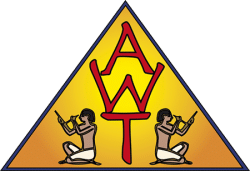This brand new tour was aimed at a look at the officials and artisans responsible for creating well-known monuments.

Egyptologist Dr Campbell Price had suggested the theme and planned to show our group some exciting new sites on our journey.
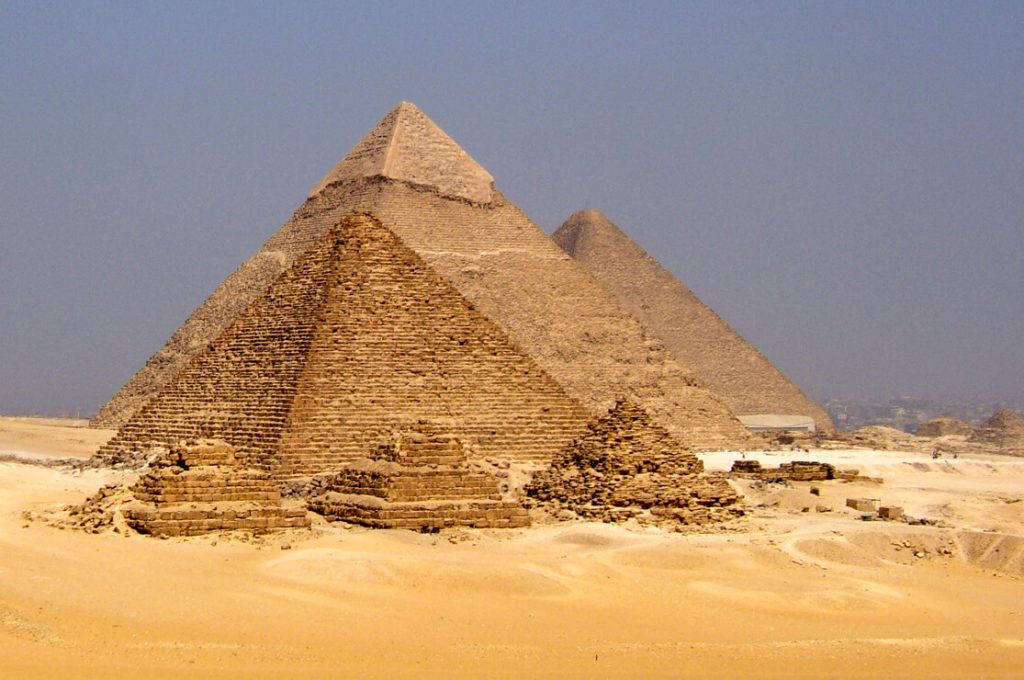
Giza Plateau 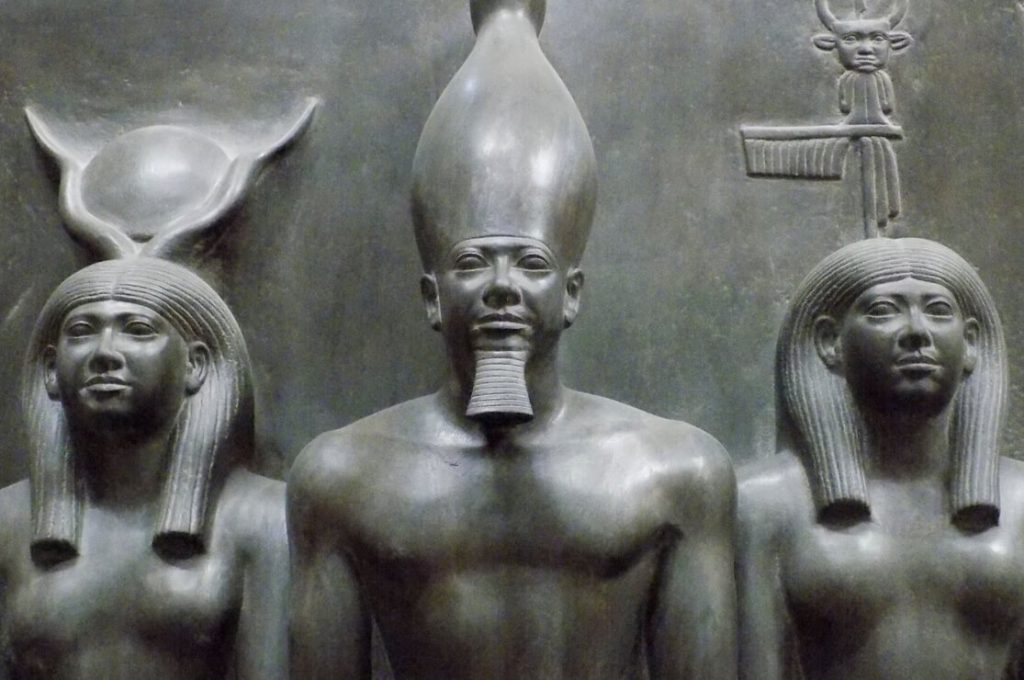
Cairo Museum
We began in Cairo with a visit to Giza followed by a tour of Cairo Museum.
The next day we headed to Saqqara where one of the many highlights was entering the newly opened mastaba of Vizier Mehu dating from the VI Dynasty with its stunning coloured reliefs. The most spectacular room was the offering chapel of Mehu himself where we could see the wonderful false door showing Mehu’s full set of titles.
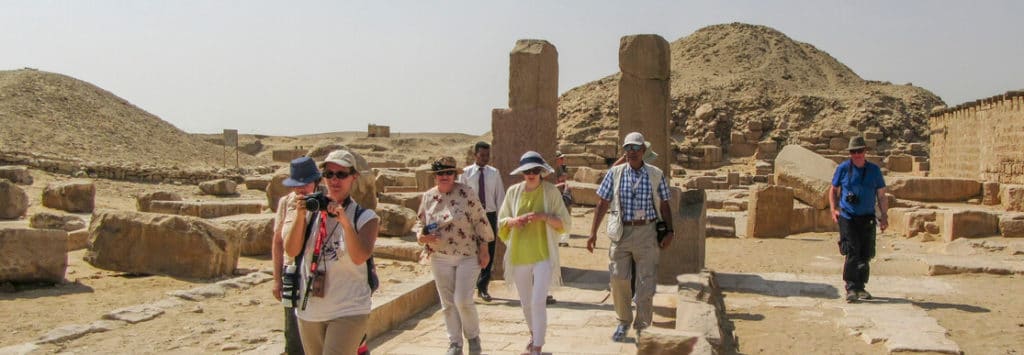
We entered the Pyramid of Unas to view the pyramid texts. Then Campbell walked us to the south face of the pyramid to read the inscription of Khaemwaset on the original limestone casing blocks commemorating his restoration of the pyramid.
On to the New Kingdom Tombs of Horemheb the General, and Maya Overseer of Works during the reign of Tutankhamun.
After a refreshing lunch we returned to the site and headed to the Serapeum burial place of the Apis bulls. Finally to the Old Kingdom mastabas with time to enter the Pyramid of Teti.
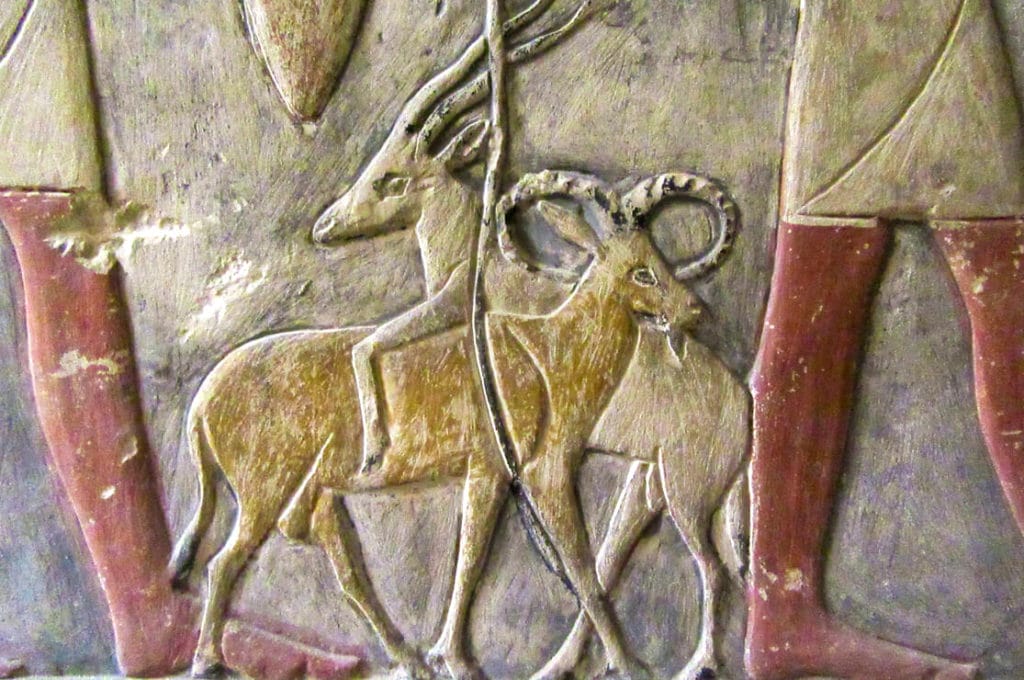
Mastaba of Mehu 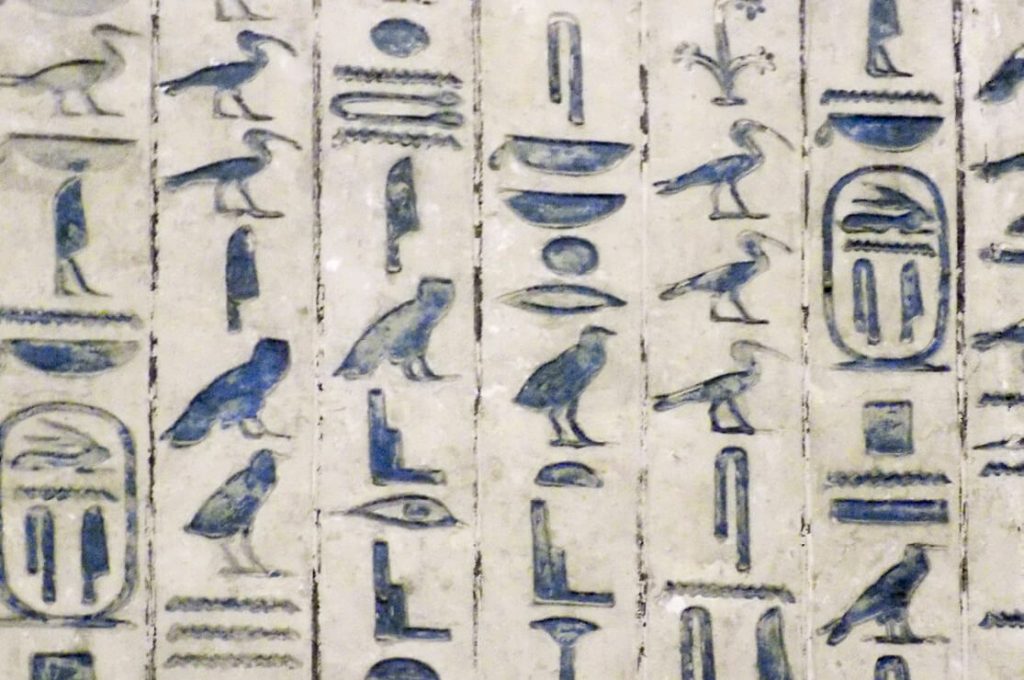
Pyramid of Unas 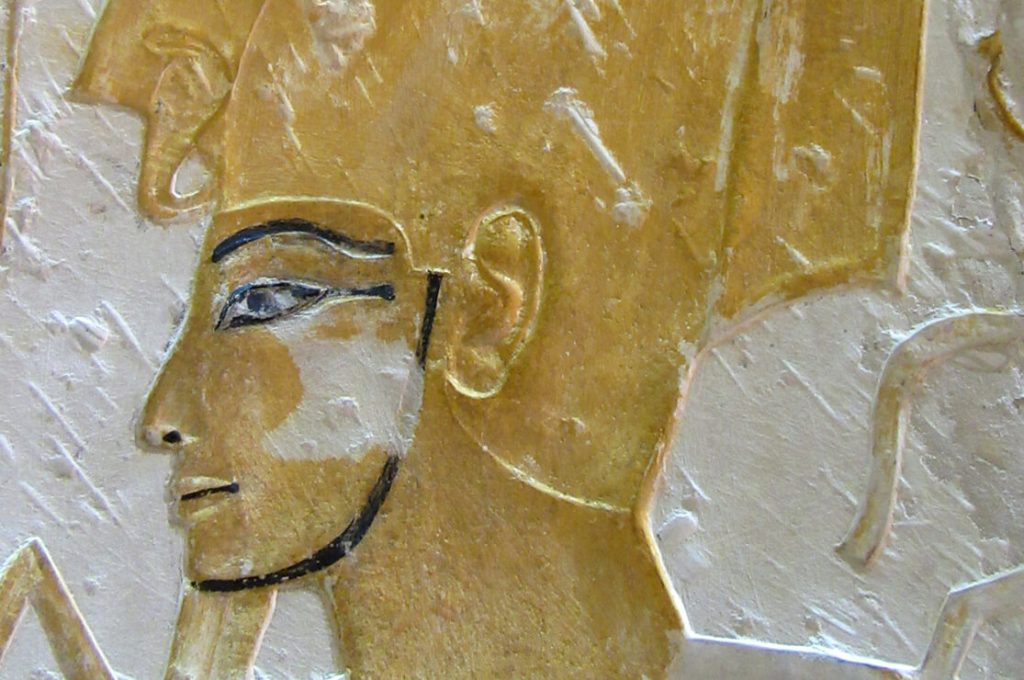
Tomb of Maya, Saqqara
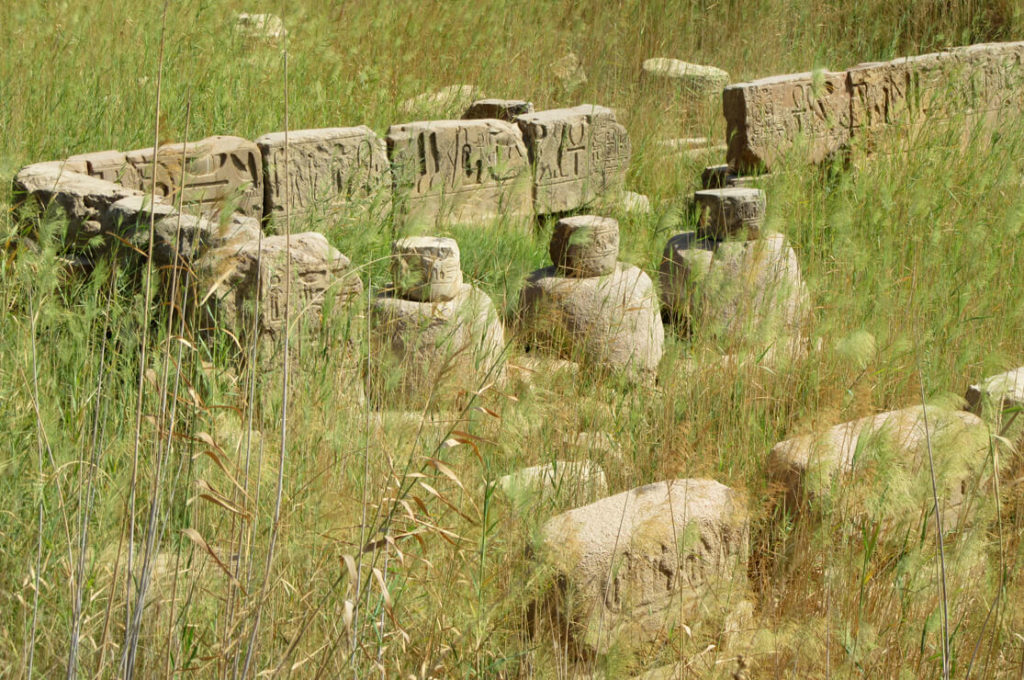
Herakleopolis (Ehnasya) 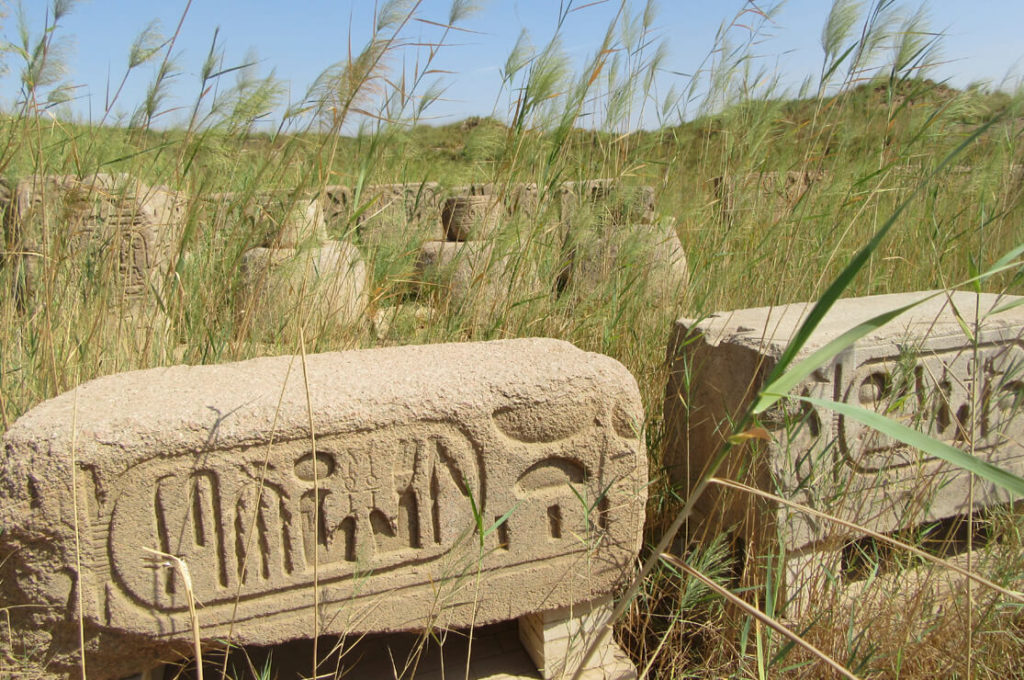
Herakleopolis (Ehnasya) 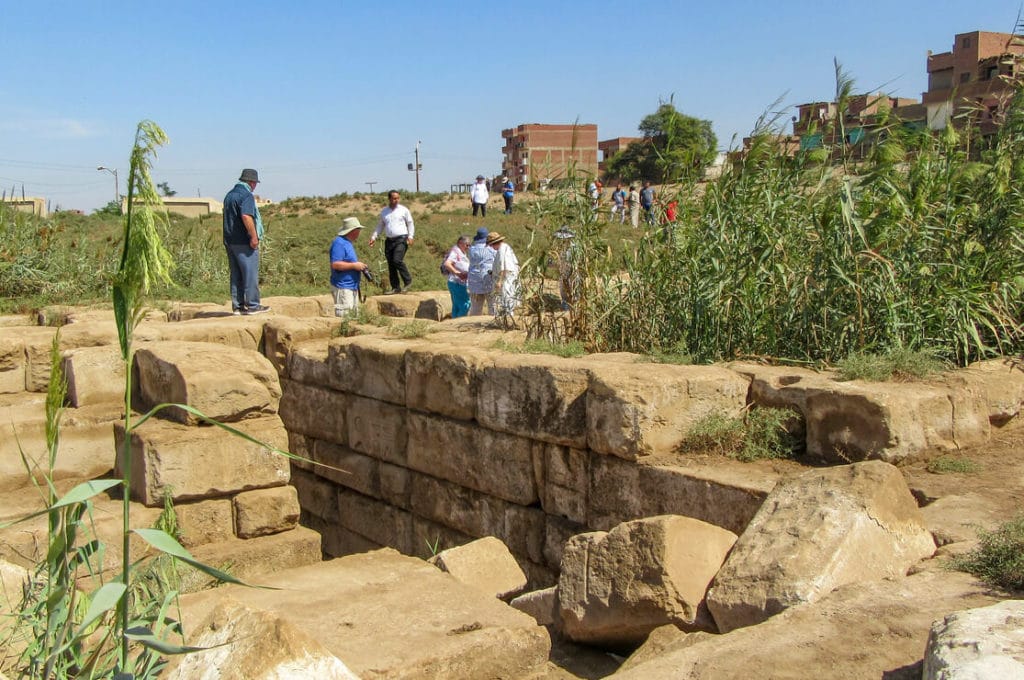
Herakleopolis Magna – Ehnsya

Our road trip began as we left the city and headed to Minya armed with lunch boxes in a brand new coach. After a couple of hours on the road we arrived at Herakleopolis Magna, or as it is known by locals, Ehnasya. We had a special permit to visit the site and we were met by local Inspectors who led us across a grassy landscape to an area where the view dropped away before us to reveal the remains of a temple. We scrambled down the hillside through the reed beds behind one of our inspectors and Campbell pointed out vast blocks bearing the titles of Ramesses II.
Next we were taken to another site, untouched since 2010, when a Spanish led team excavation discovered a previously unknown tomb. After a final walk to view some free standing columns and a look at the museum outside the inspectors office, we thanked everyone and said our goodbyes. On arrival in Minya we checked in to the Nefertiti Hotel and that evening Campbell gave a talk and we all studied the maps of the area.
An early start for a full day at Amarna beginning with a wander around the old EES dig house. Several people were reading the Mary Chubb book ‘Nefertiti lived here’ so it was a good time to visit Beit Osman, the House of Osman. Again we met with the local Inspector at the site before the drive along the Royal Wadi to the Tomb of Akhenaten. During our day we saw the boundary stela, the Northern Tombs, the Southern Tombs, the Palace and the Aten Temple. We met briefly with Barry Kemp in the dig house as no excavation work was going on at the time.
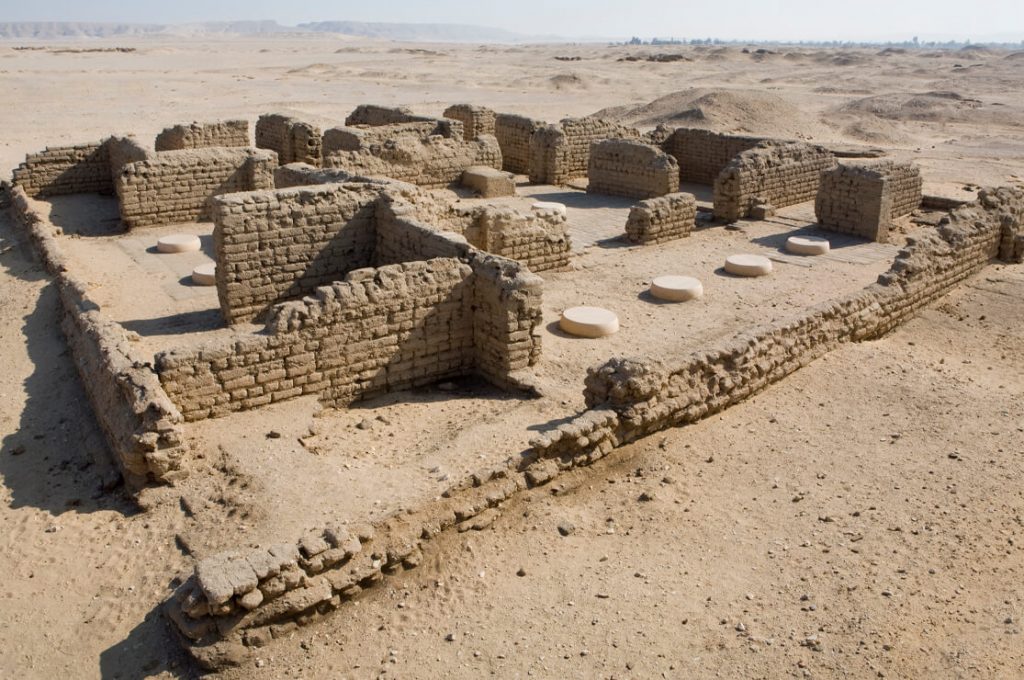
Amarna


Another early start with a visit to Beni Hassan before the heat of the day. The sun was still low behind the cliff so the climb up those never ending looking steps was reasonably easy and the reward was as ever, spectacular.
The view across the Nile was reward enough, but then we had the tombs to explore, a first for many people. Our journey towards Sohag continued and Medhat explained that this was the area of Badari of Predynastic fame but now most famous for its crop of pomegranates. We saw dozens of great refrigerated trucks being loaded with huge bright red pomegranates apparently destined for Safaga and ultimately the Emirates.
We arrived at newly opened Sohag Museum, met the Director and had our photos taken for the local newspapers and Facebook. This lovely museum is beautifully laid out and we were given a special tour as we were the first overseas tourist group to visit.
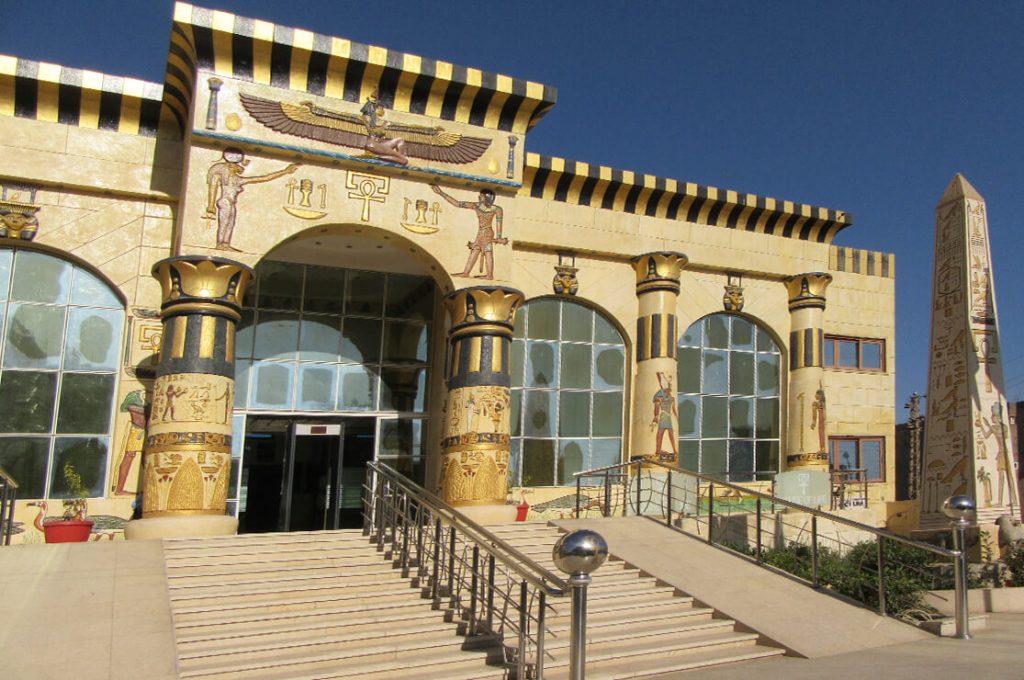

Beni Hassan 
Beni Hassan 
Sohag Museum
Later we checked in to our hotel in Abydos, the House of Life, and for most, it was an early night after a long day on the road.
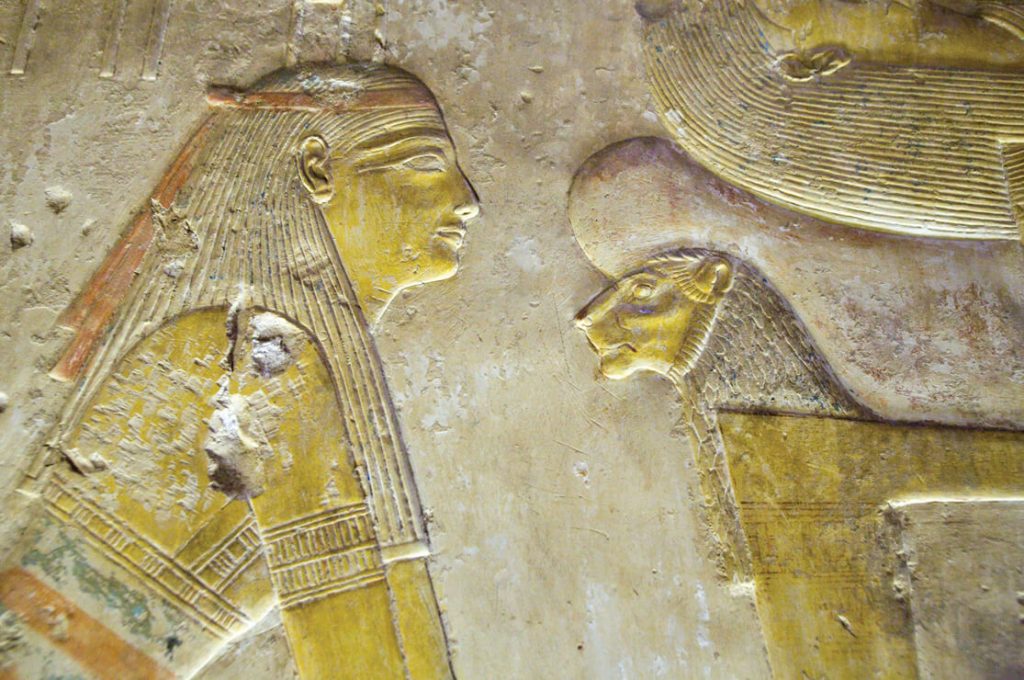
Seti I Temple, Abydos 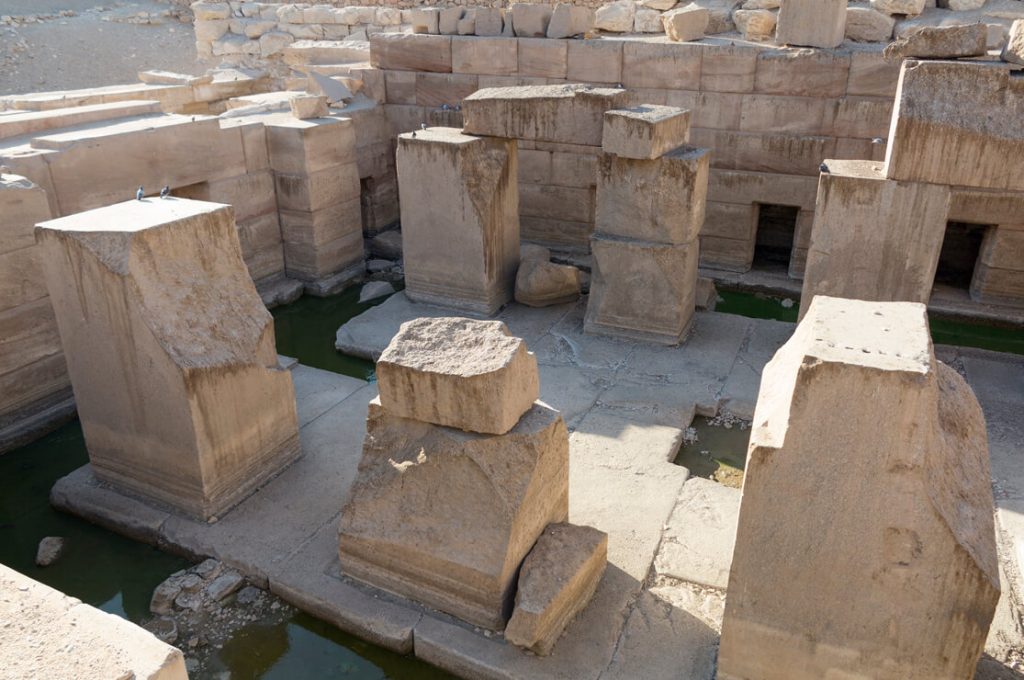
The Osireion 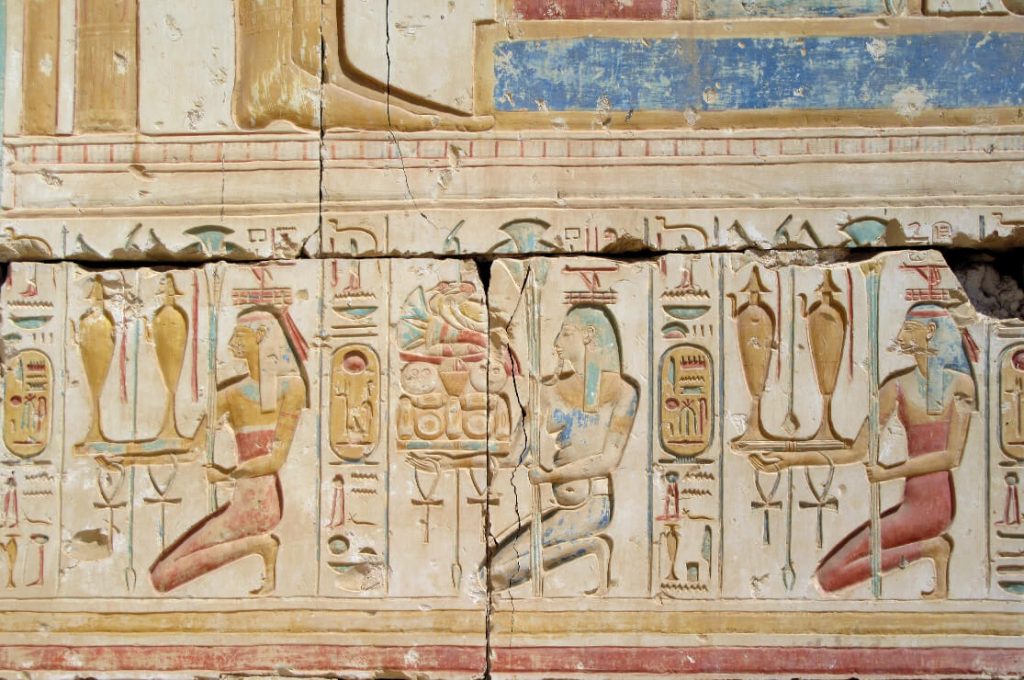
Ramesses II Temple, Abydos
We made the short trip to the Temple of Seti I before wandering out to the Osireion and the Ramesses II Temple. Then we jumped into elderly Peugeot cars and headed to Shunet el Zebib with our local Inspectors.

We walked around the ancient walls of Kom el Sultan and explored the temple of monkeys before entering the Second Dynasty mudbrick structure of Khasakhemwy. After lunch at our comfortable hotel, we left for Luxor and by 5pm we were checked in at the Old Winter Palace, Garden Pavilion Wing.
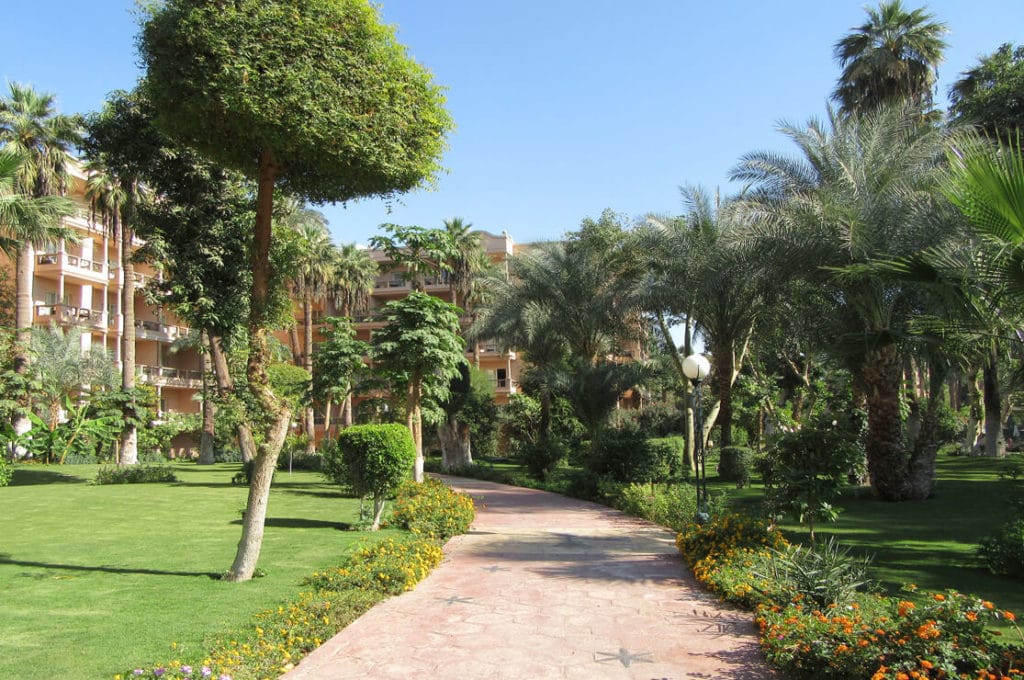
Winter Place Garden Pavillion 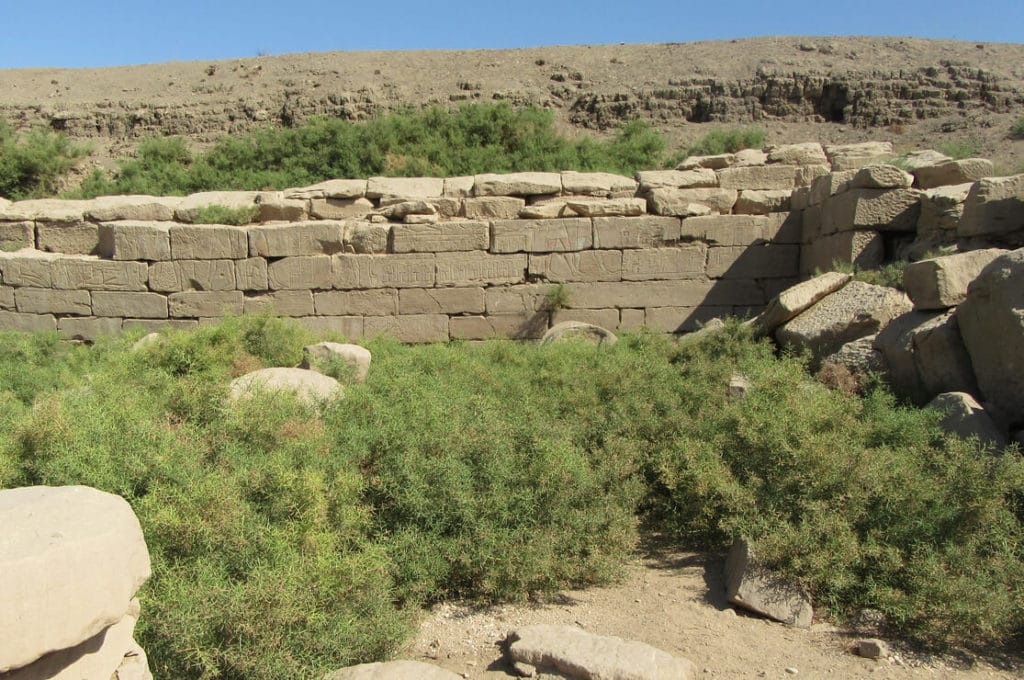
Mut Temple 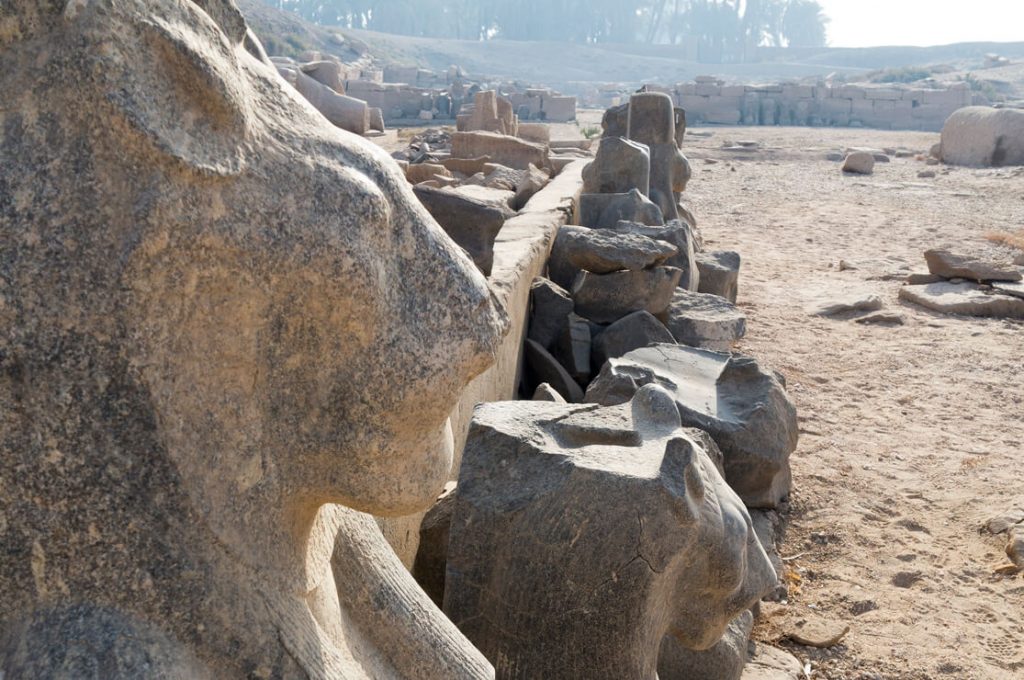
Mut Temple, Karnak
Our first site in Luxor was the Precinct of Mut which since our last visit had become overgrown with camel grass, thorns and reeds. It was difficult to make out the important reliefs from a distance but Medhat explained as much as possible. The unusual Sacred Lake seemed quite overgrown but the birdlife was obviously doing well.
On to Karnak where we met with Salah Elmasekh, long-time friend of AWT, and he gave us a guided tour taking in the excavations at the jetty and the bath houses.
Then we headed to the north pylon as we had arranged a special permit to climb the stairs and view the temple from the roof.
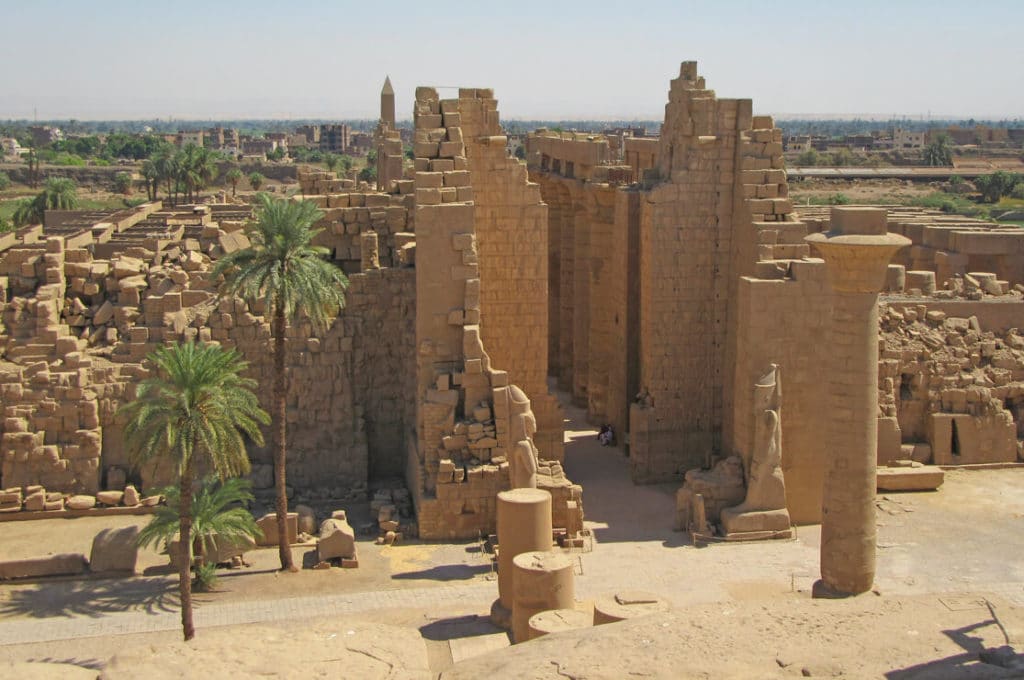
The stairs were narrow, sandy underfoot and poorly lit and some of the group decided not to continue to the roof, but those who did, enjoyed the magnificent views in all directions.
A special trip to the Khonsu temple to see the recently cleaned and conserved reliefs before time for a drink at the Sacred Lake café.
Later we visited Luxor Museum and Luxor Temple in full floodlit mode.
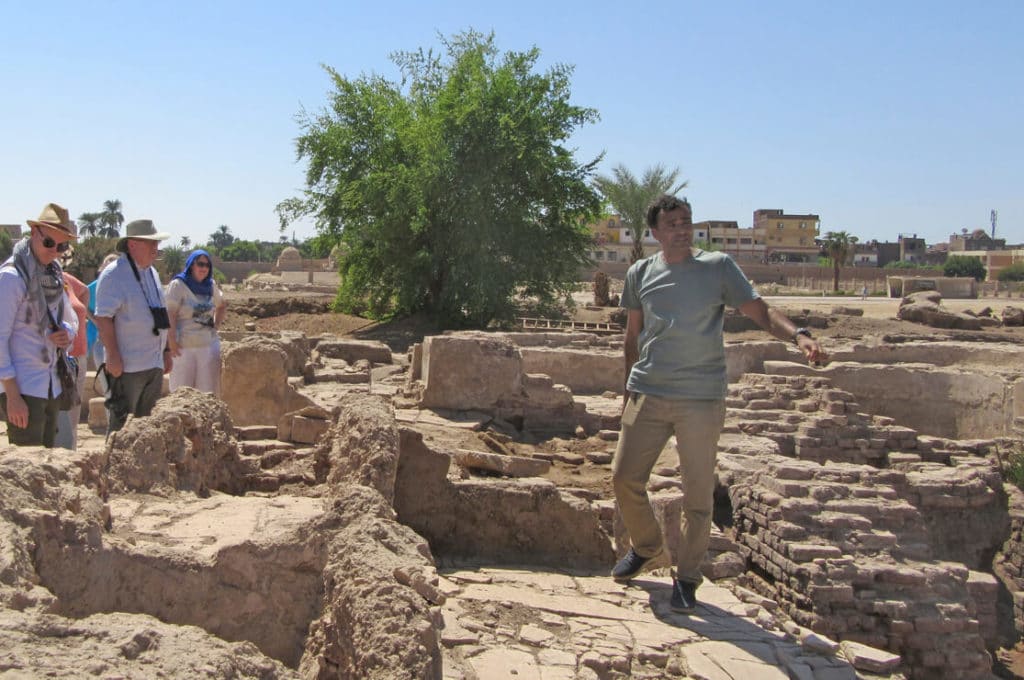
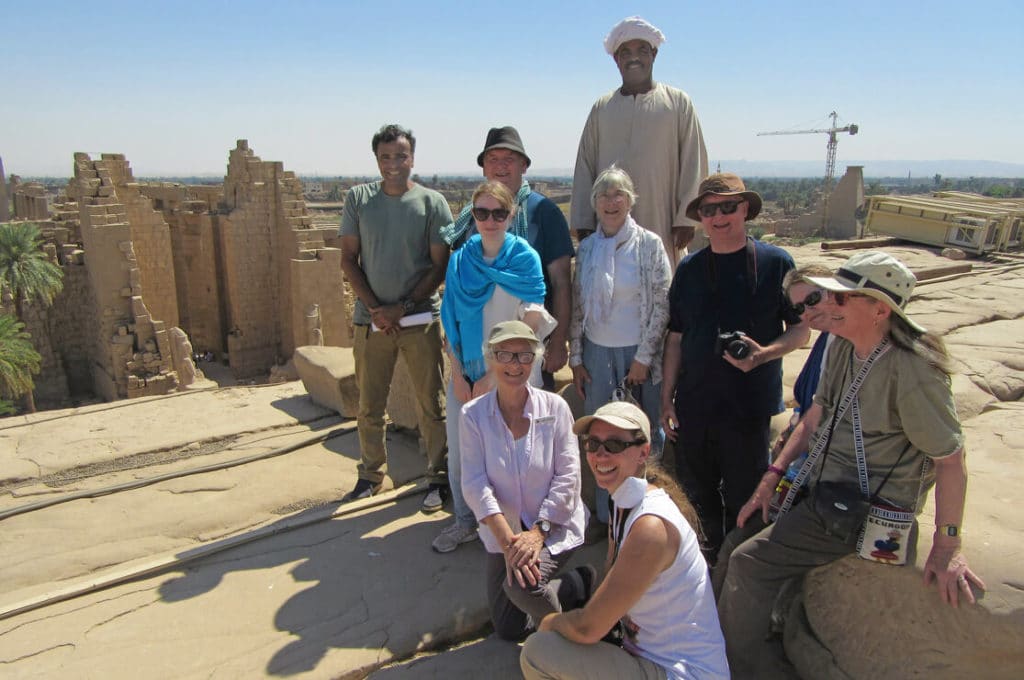
Group atop Karnak Pylon 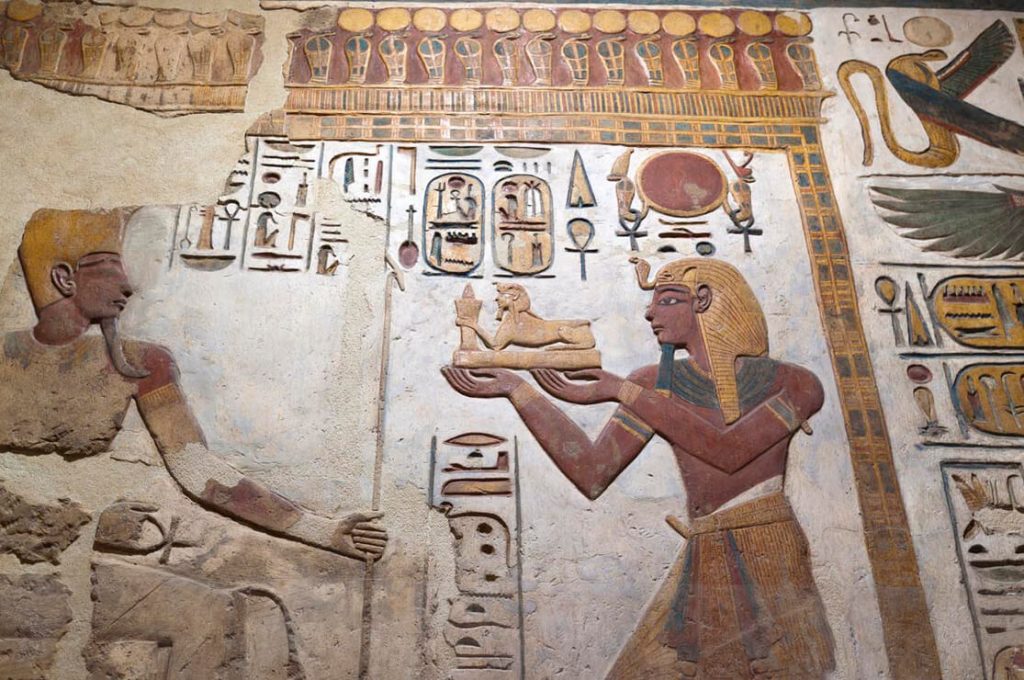
Khonsu Temple
We crossed the Nile by launch and travelled to Deir el Medina to enter the tombs of the workmen and discover their homes. It was an extremely hot day and our next effort was a climb at Qurnet Murai to enter the tomb of Huy.
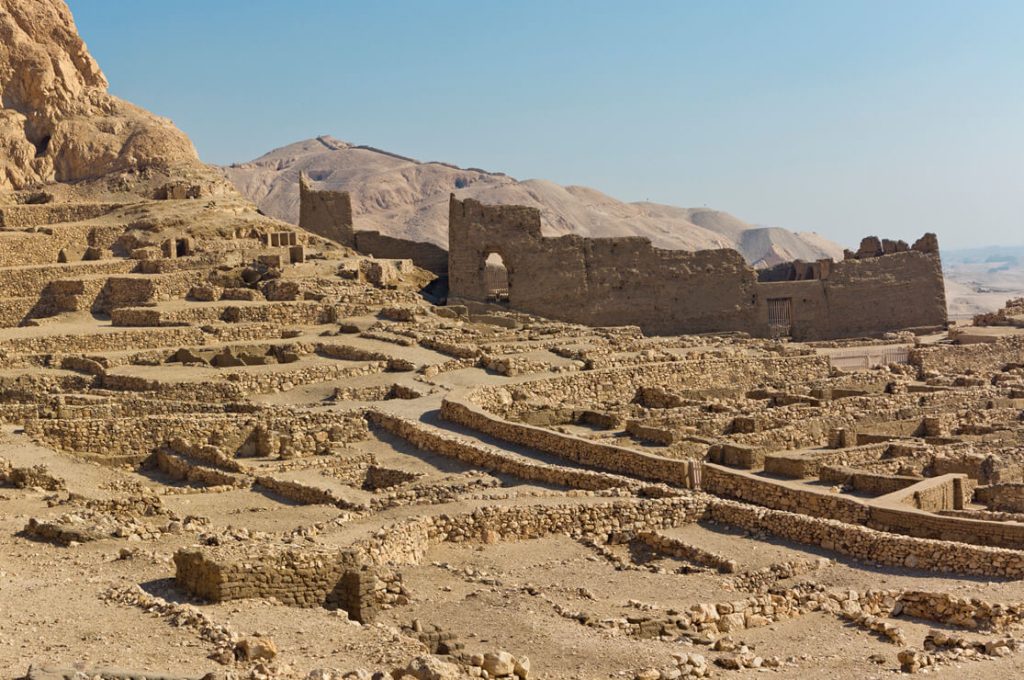
2Deir el Medina 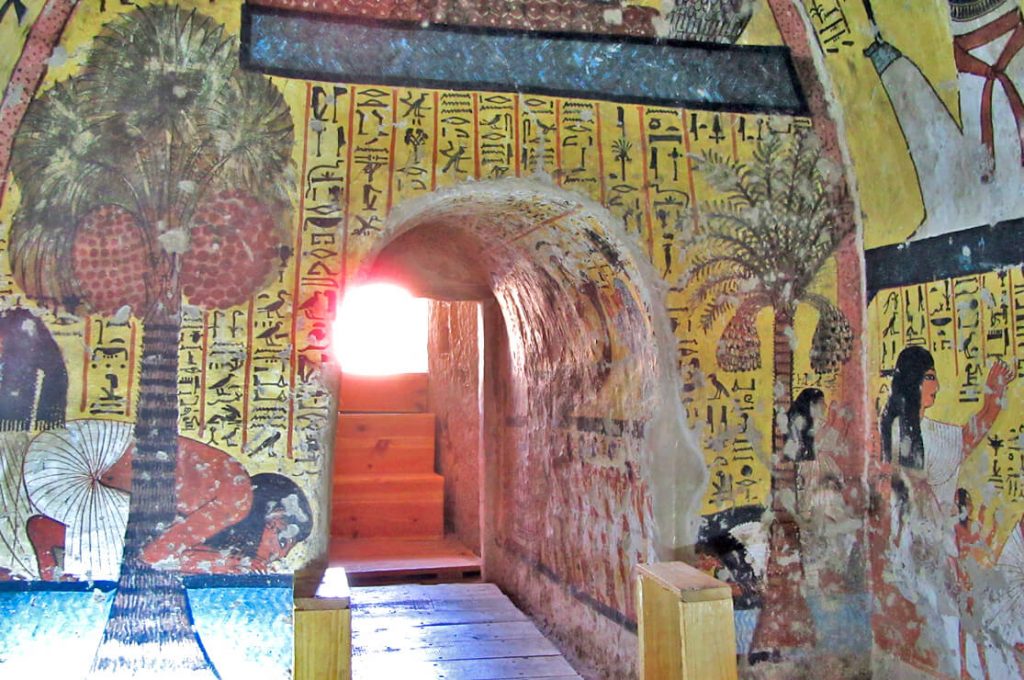
Tomb of Amun Nakht, Deir el Medina 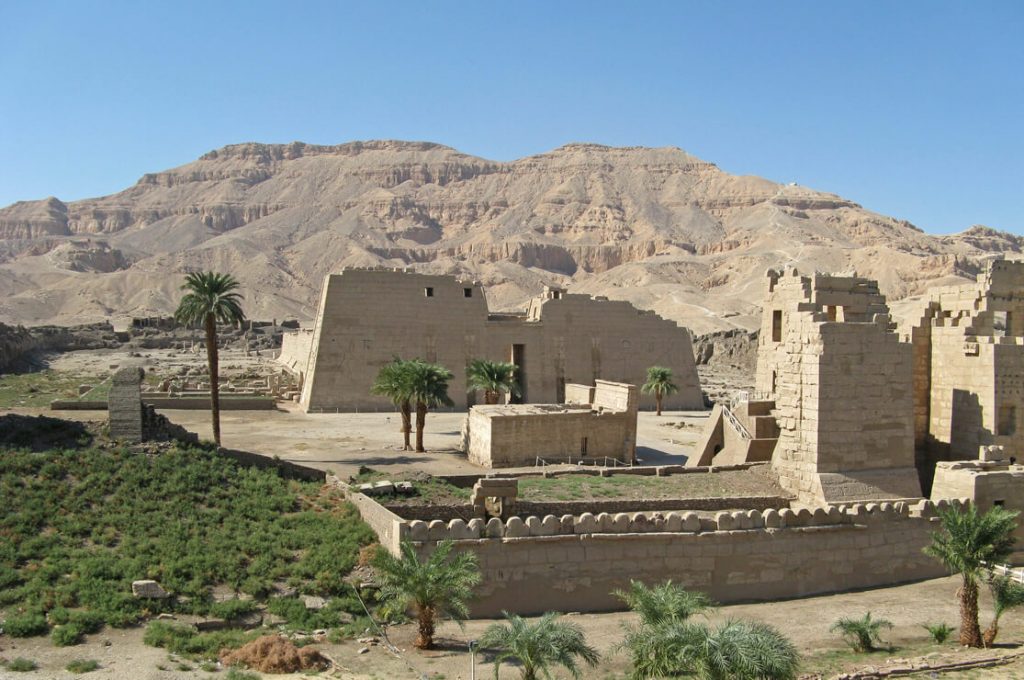
Medinet Habu 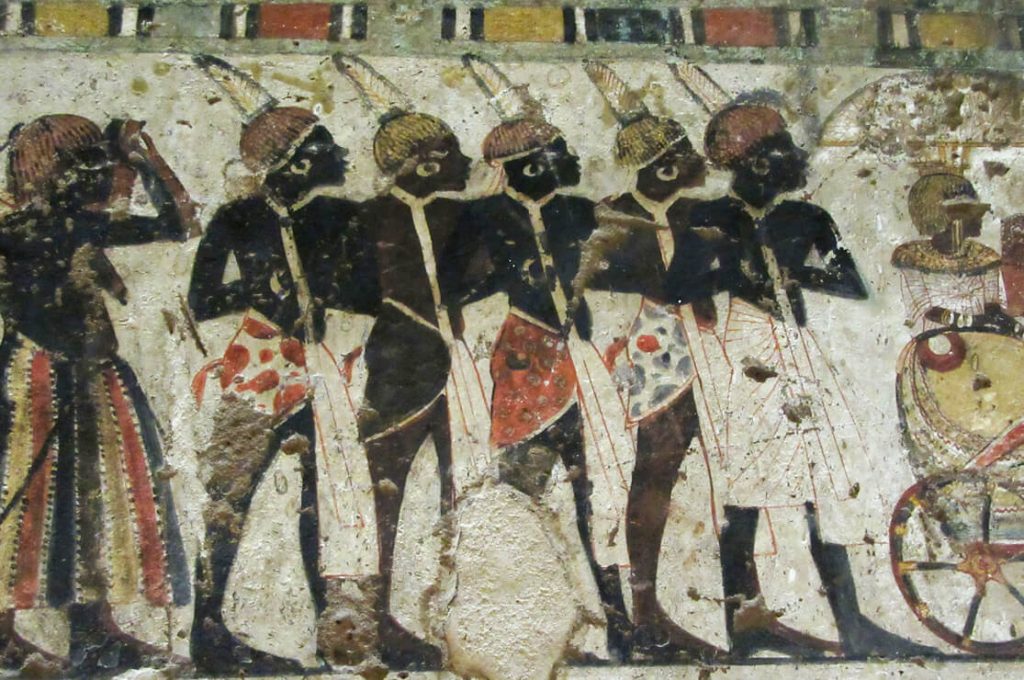
Tomb of Amenhotep Huy
We continued to Medinet Habu before our planned lunch break at a local restaurant. We next visited the temple of Merenptah but the museum and the magazine were firmly locked and no amount of discussion with the keepers could open the doors. Later Campbell gave a talk about Senenmut whose tomb we would enter in a couple of days.
A perfect Friday as we set off for Gebel el Silsila, the vast sandstone quarry used by the great Pharaohs of the 18th Dynasty.
After nearly three hours driving south we stopped at the roadside and waited for a couple of small local buses to take us to the Nile. We then walked through palm groves and vegetable gardens and boarded a motor boat.
After a fair amount of coaxing the engine started and we headed further south to the cliffs in the distance.
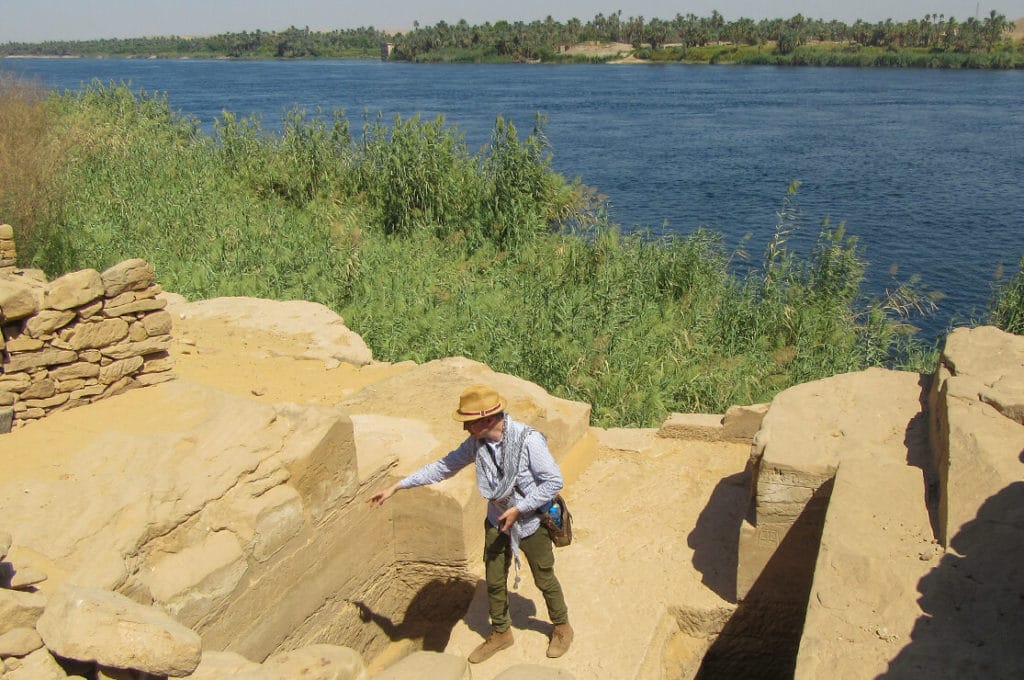
Campbell explained the Horemheb shrine before we walked along the edge of the Nile with Campbell pointing out various mason marks and cartouches and then we sat in the shade of the high quarry walls to have a picnic.
Back on our boat we sailed further south to view the famous Capstone and the Seti I shrine before cruising back to our mooring place.
Once again we walked through carefully tended gardens growing karkaday, mango, banana, and a prickly fruit called a mori also known as bitter plant and used in local remedies. Eventually we were back at the coach after what had been a truly exciting day.
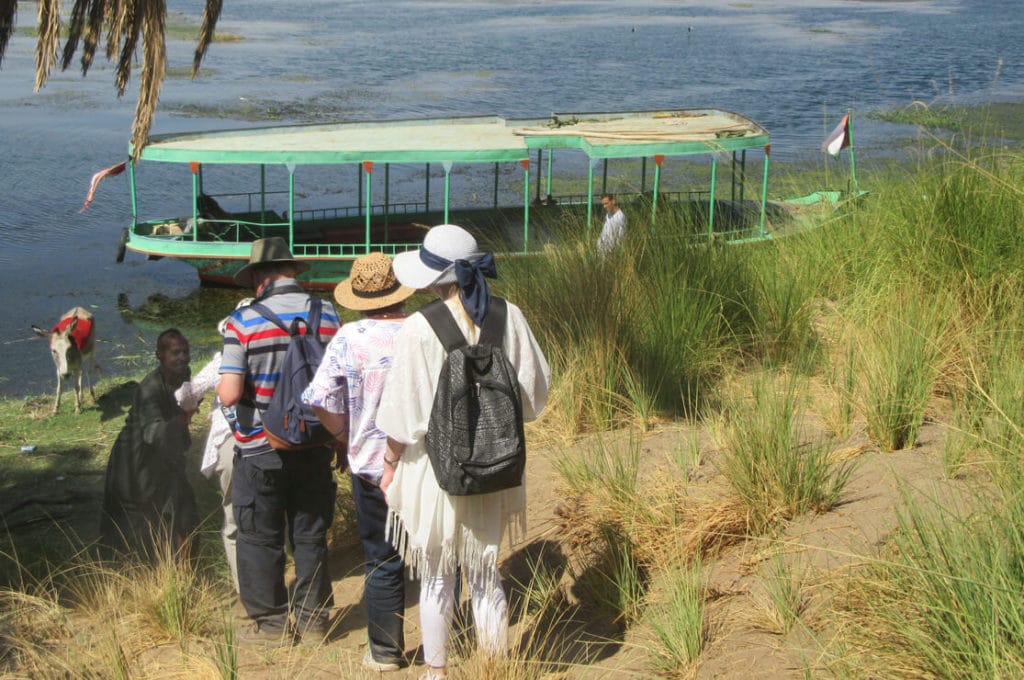
The launch ride to Gebel Silsila 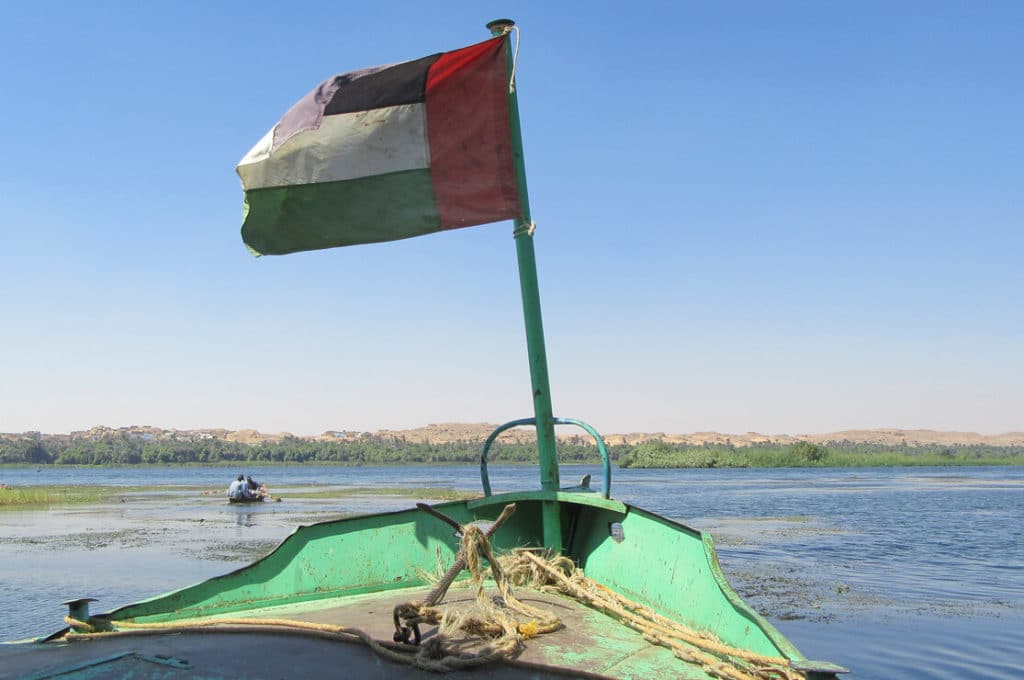
Sailing to Gebel Silsila 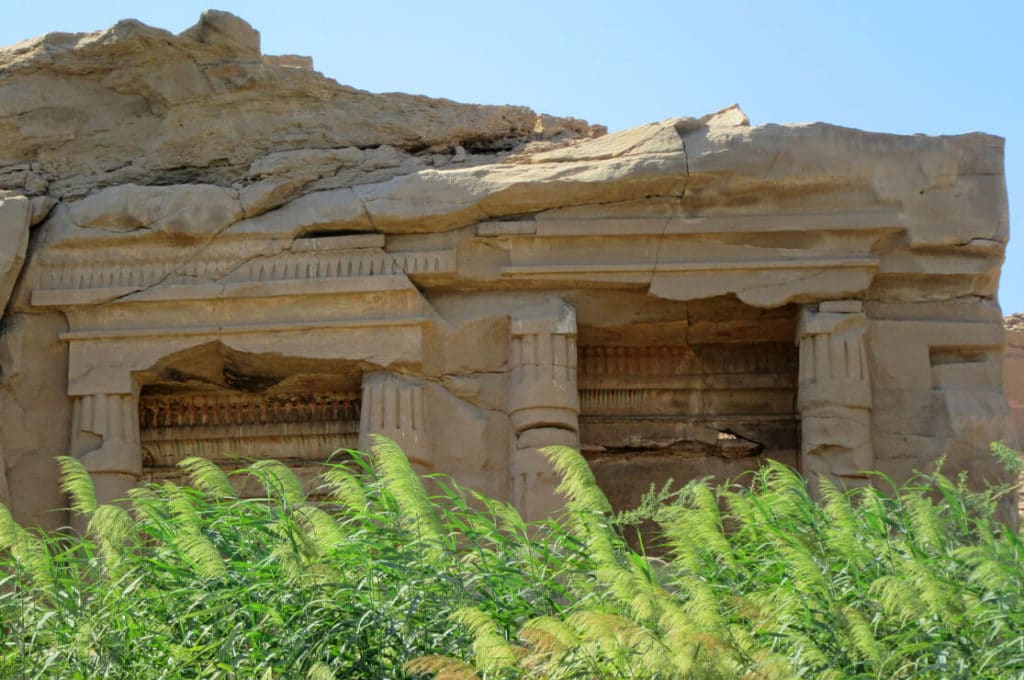
Gebel Silsila Shrines 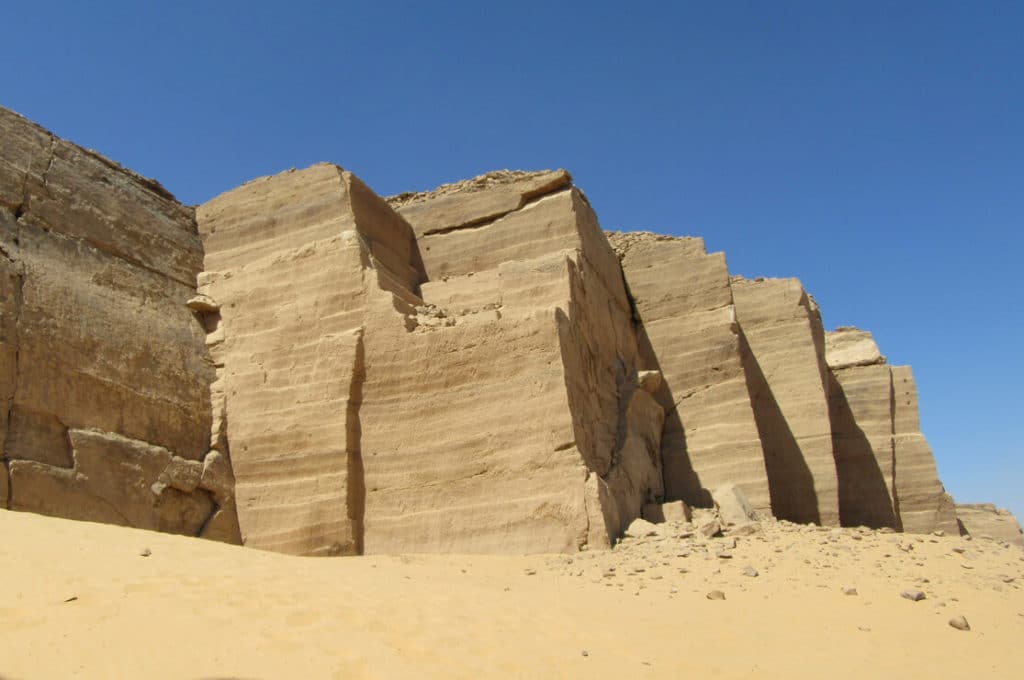
Gebel Silsila
Off to the West Bank and straight to Deir el Bahri and the Tomb of Senenmut the architect named by Hatshepsut as ‘High Steward of the King’. We had arranged a private entry to the tomb known as TT353 because Senenmut claims to be Chief Architect of Deir El Bahri, so an important figure on our quest to learn more.
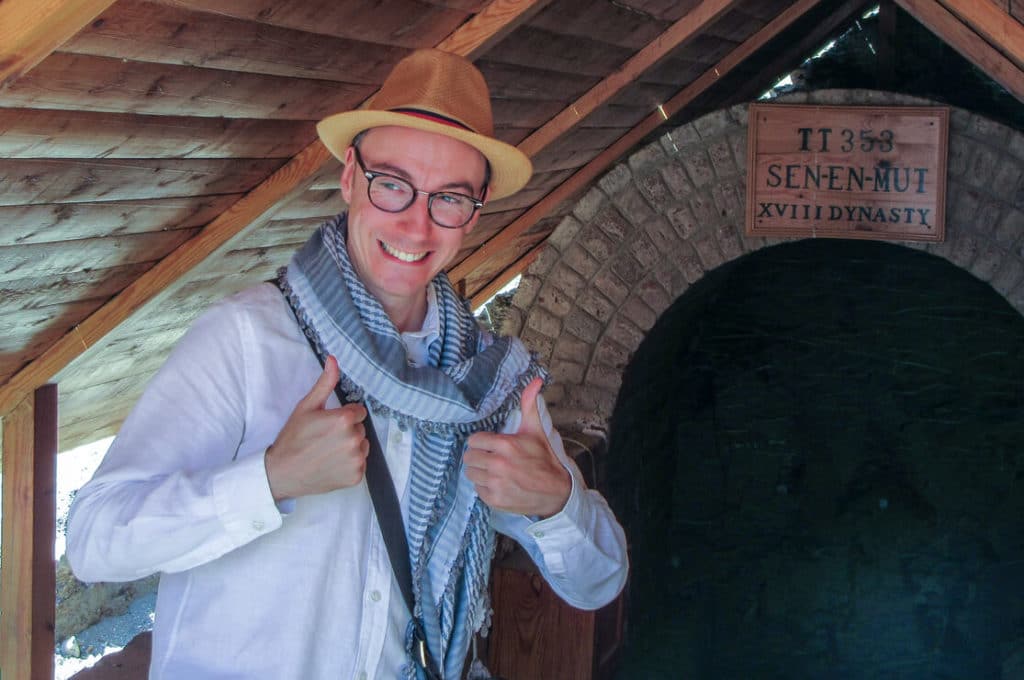
Dr Campbell Price
Campbell explained the astronomical ceiling and some of us ventured down in to the dark lower chamber with torches.
Medhat then took everyone to Hatshepsut’s Temple for a guided tour before we took a break for lunch. Then we set off for the Nobles’ Tombs and the first we entered was Rekhmire followed by Sennefer, the tomb famous for the vine leaf ceilings. Finally the other tombs including the lovely Ramose.
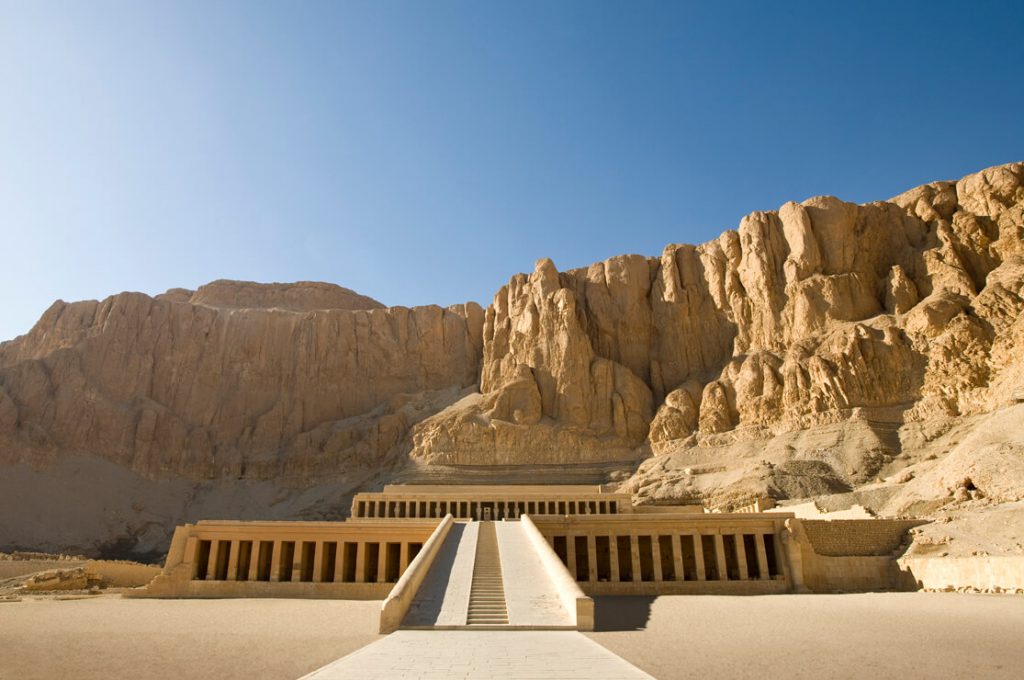
Temple of Hatshepsut 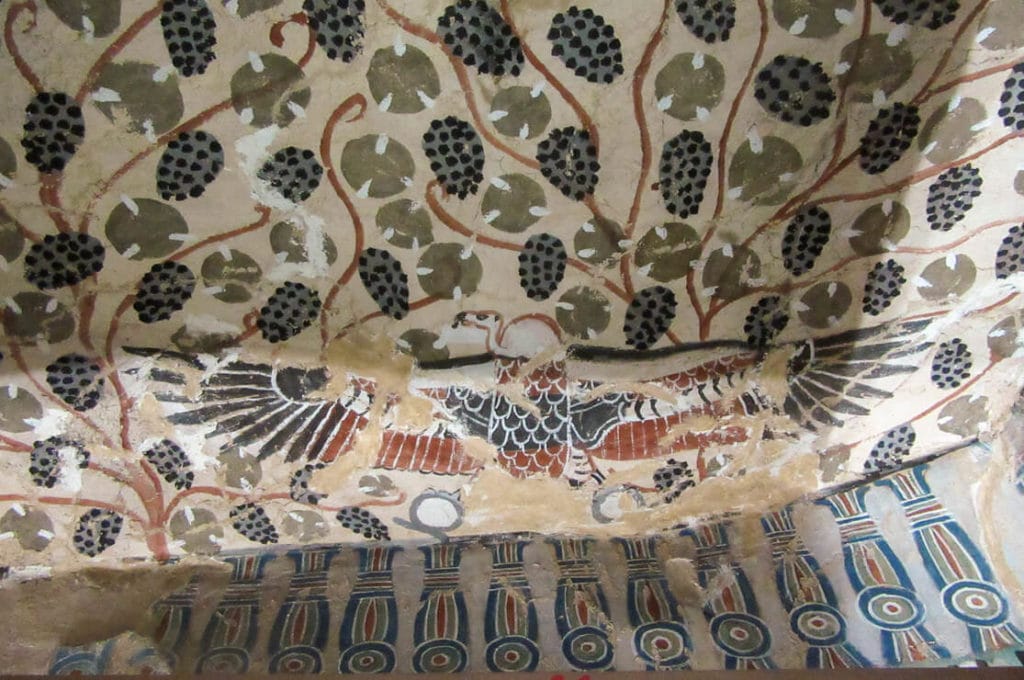
Tomb of Sennefer 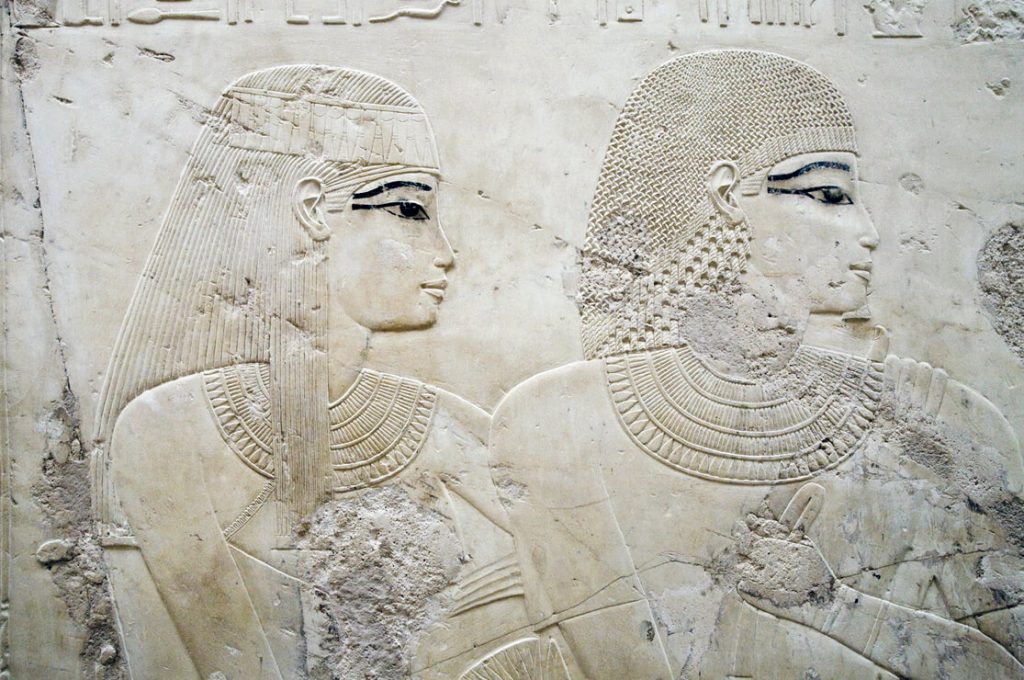
Tomb of Ramose 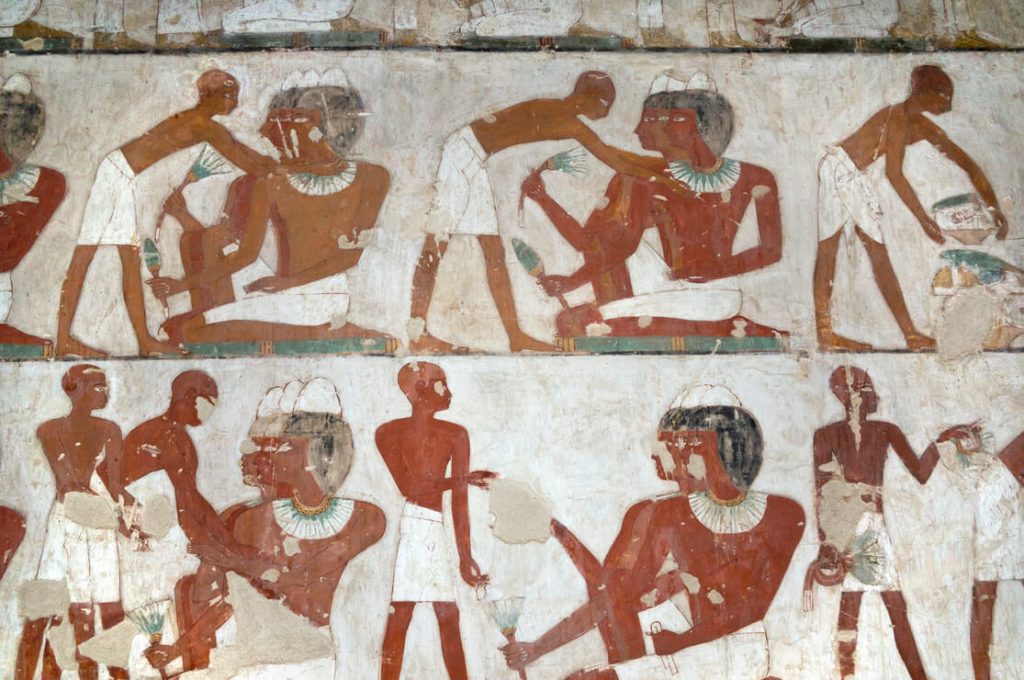
Tomb of Rekhmire
Our final call of the day was at the AUC Theban Mapping Project Library where we met with Dr Kent Weeks. Many passengers had carried goodies for the library and presented them to Kent. A lovely end to the day.
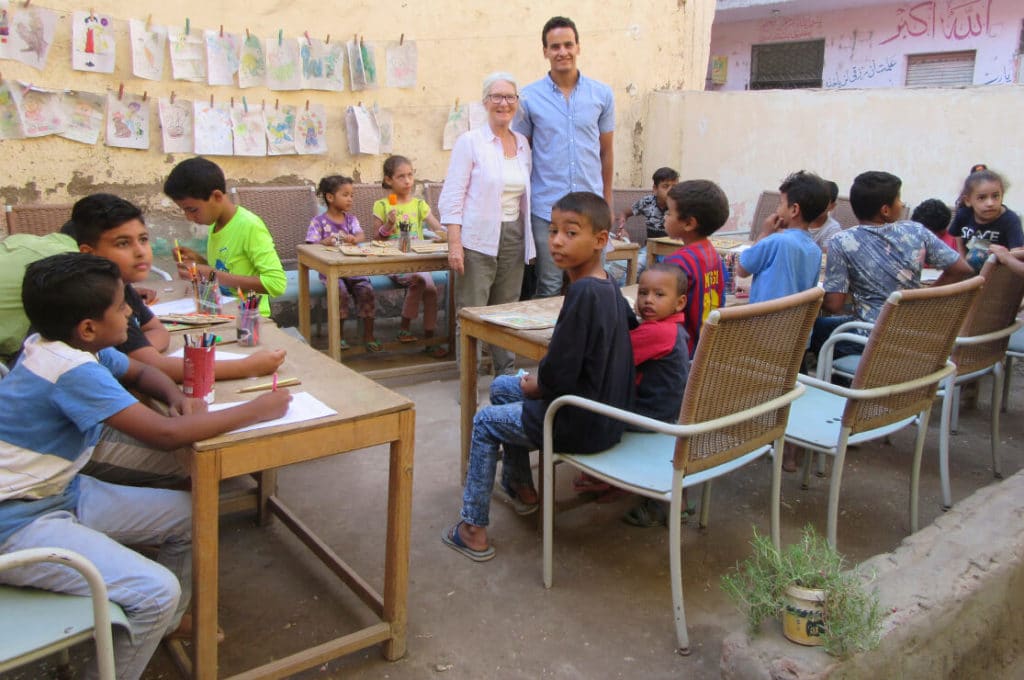
TMP Library Luxor 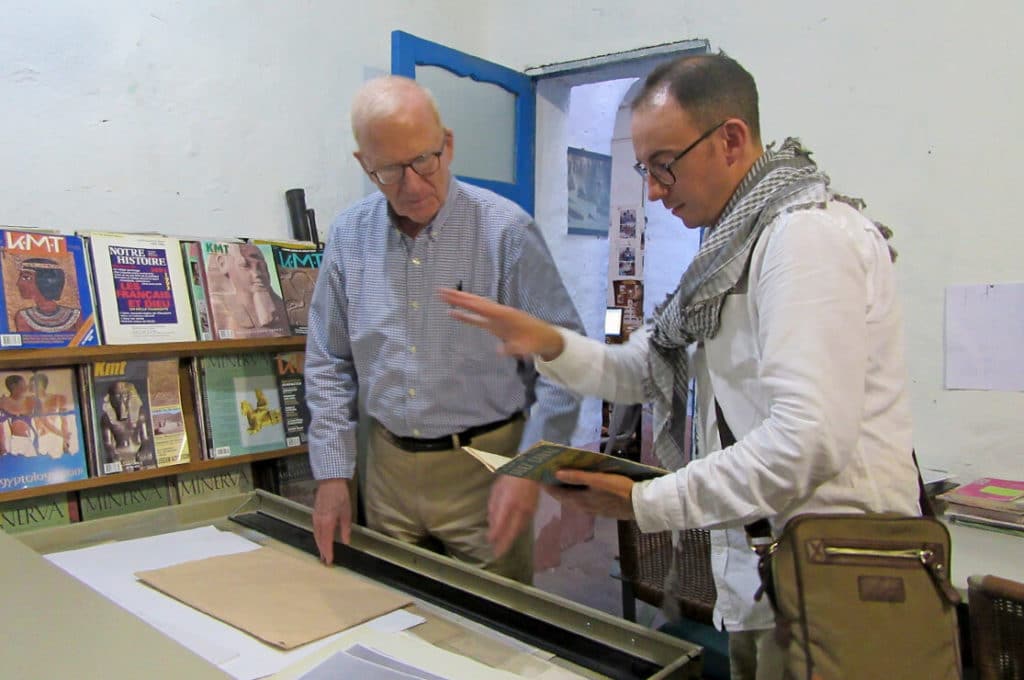
Kent Weeks & Campbell Price 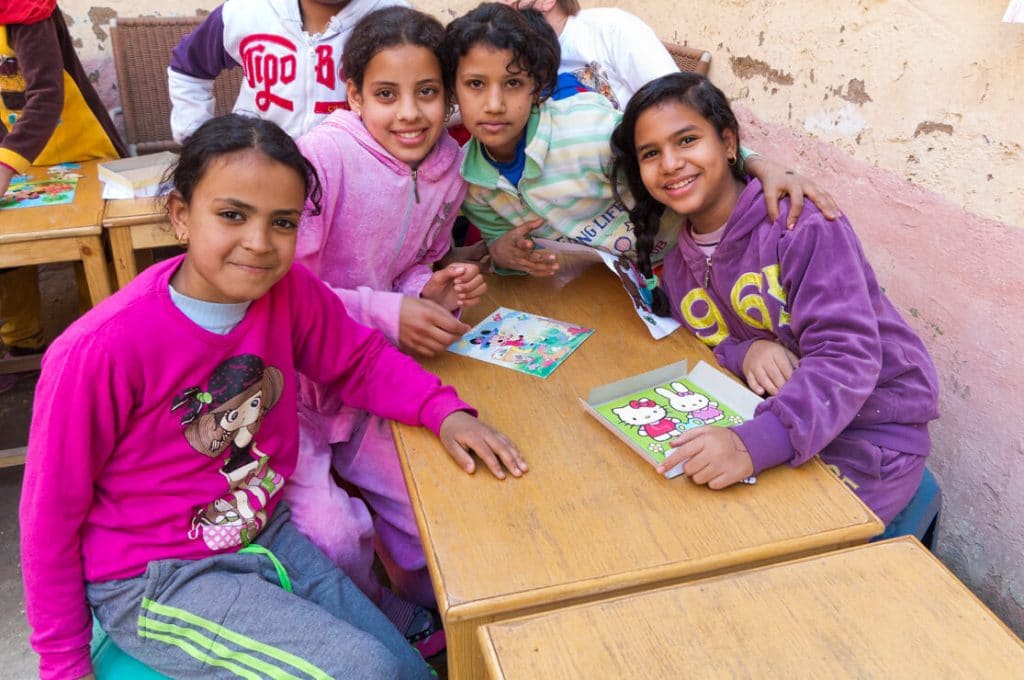
Kent Weeks Library
Our last day was another trip to the West Bank and this time the Valley of the Kings. We had the regular ticket for three tombs but some of the group decided to purchase the extra tickets for Seti I and Tutankhamun.
That evening we all met in the cool of the Royal Bar in the Palace building. Time to say thank you and goodbye to Medhat who was leaving Luxor before us. Then to thank Campbell for taking us on this exciting and informative tour looking at the people supporting the great pharaohs.
A wonderful week with thanks to Medhat and Wael and all our crew in Egypt.
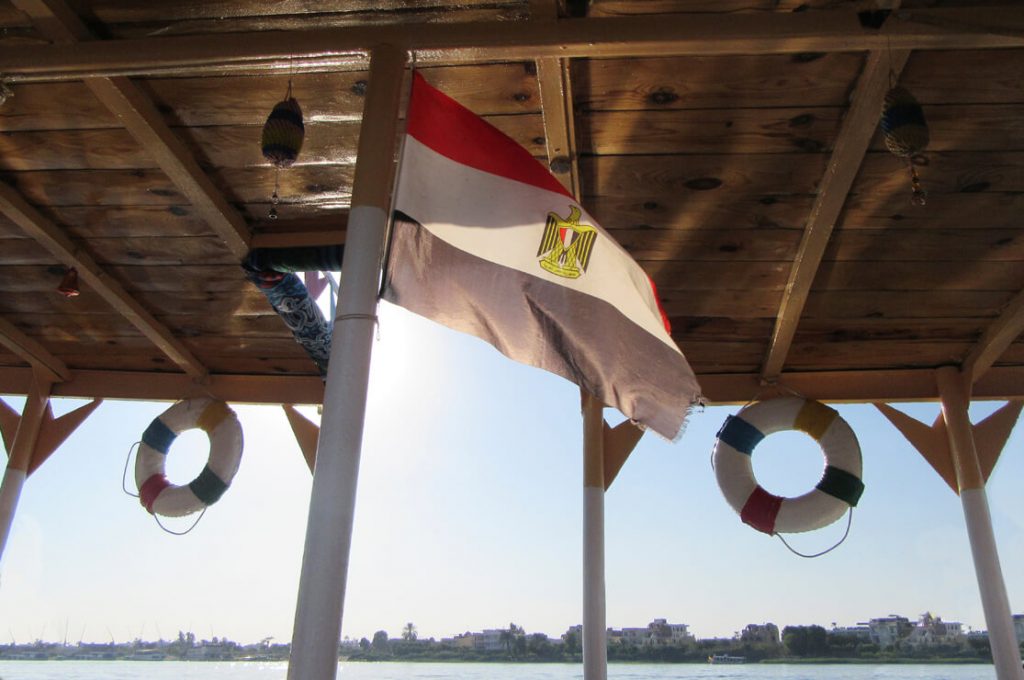
Most importantly, once again a huge thank you to all the Inspectors from the Ministry of Antiquities who give us so much of their time and expertise while we are travelling.
